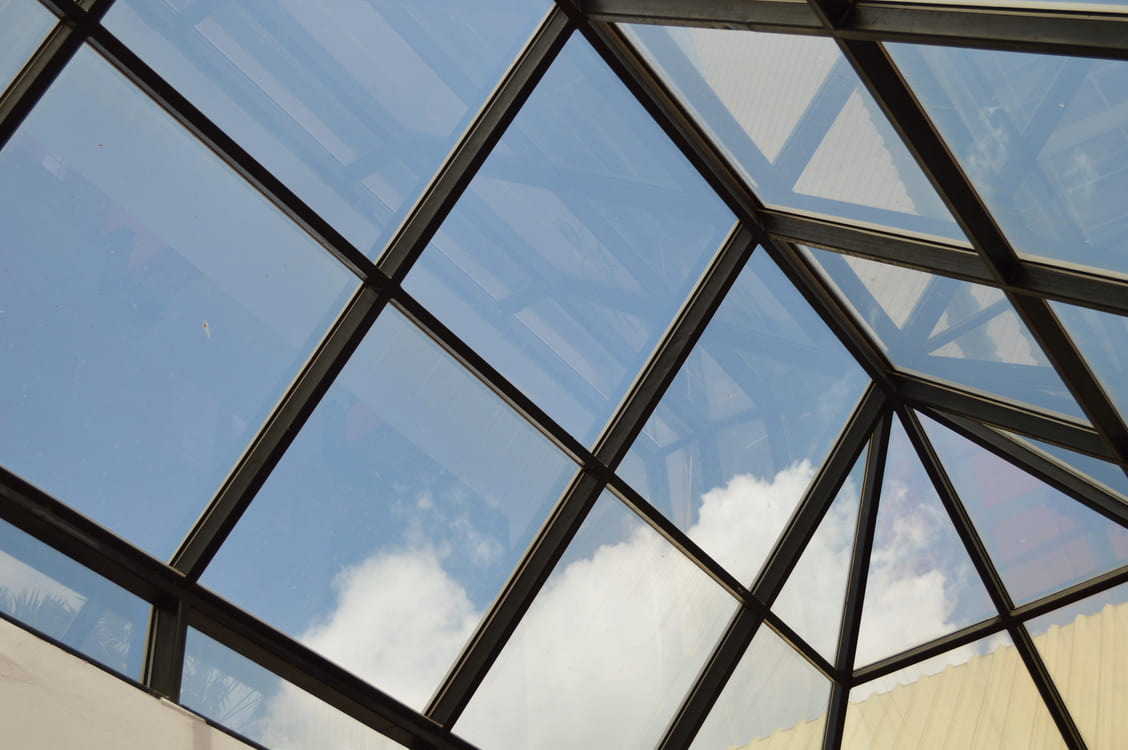Roof Pitch is an important element in construction and engineering to allow seamless functionality and ensure that the roofing system works efficiently, preventing water accumulation and eventually, structural damage. It ensures the material’s durability and contributes to easier cleaning and maintenance. Roof pitch is described as the steepness of a roof, indicating the vertical rise over a horizontal distance. Aside from its practical benefits, having the right roof pitch also improves your exterior aesthetics. Whether the roof is part of the outdoor living area or part of the home, facilitating a balanced sunlight exposure and ventilation adds to its contemporary charm. A roof can be classified into two, depending on the angle of its slope: (1) steep roof has an angle of 10 degrees or more, while (2) Shallow or flat roofs has an angle of less than 10 degrees.
Polycarbonate roofs usually follow a flat roof angle to add on its aesthetic appeal. And yes, even flat designs require a minimum slope of 5-10 degrees to allow water to flow efficiently without stagnating the roof, serving both practical and aesthetic purposes. To know the right pitch for your application, consider the following factors:
-
Type of Material
Different polycarbonate materials drain water differently. For example, corrugated polycarbonate requires a steeper pitch of at least 10 degrees compared to flat roofs like solid polycarbonate because the ridges and valleys of the sheet, combined with fasteners, create places where water can accumulate if the pitch is low. Proper roof pitch is also important in twill wall polycarbonate to allow the water to flow down naturally down its flutes without being stuck. Stagnant water in the flutes can induce growth of mold and mildew, which damages the material and ruins its look.
-
Geographical Location
Water buildup is damaging not only on the material itself, but also on the structural integrity of the home so coastal areas and places that experience heavy rainfall require a steeper slope to ensure water rundown quickly and efficiently. The wind load in the area should also be considered. Slight slopes can be uplifted and worn down during a strong wind storm, while steeper pitch can increase wind pressure. Ensure a balanced structure so the roof can withstand strong, persistent winds. People living in areas outside of these concerns may opt for slight, shallow slopes.
-
Building Codes and Regulations
Different areas require a specific minimum slope particularly for safety and performance. Following this local building codes ensure resistance and durability for all kinds of weather. In a tropical country like the Philippines, slopes vary from low to moderate to high, depending on the function of the roof and the area of application. A clear roof with low slopes is particularly popular in the Philippines due to its aesthetic and functional appeal.
-
Aesthetics and Design
The roof pitch contributes to the overall aesthetic of the roofing system. It reflects architectural and regional styles and personal preferences. It also utilizes the functionality of the home. A steeper slope houses enough space for an extra room in the attic or the upper floor, and even influences light penetration, ventilation, and shading.
Pitch Perfect!
Understanding roof pitch and considering its importance is crucial to the home’s durability and stability. Polycarbonate usually follows a low slope design especially if the purpose is to maximize its aesthetic appeal and the application is for pergolas or an outdoor space. For best results, it is better to ask your local supplier, or ask for professional help, especially if the roofing system is complex. This ensures proper functionality especially after a major weather disturbance.
For more information about product prices, locations where to buy aluminum composite panels, acrylic sheets and buy polycarbonate sheets, you can reach out to us on the following details:
☎️0998 979 7659 / 0998 961 7502
☎️ (02) 8808-7659
Facebook: https://www.facebook.com/polylite




